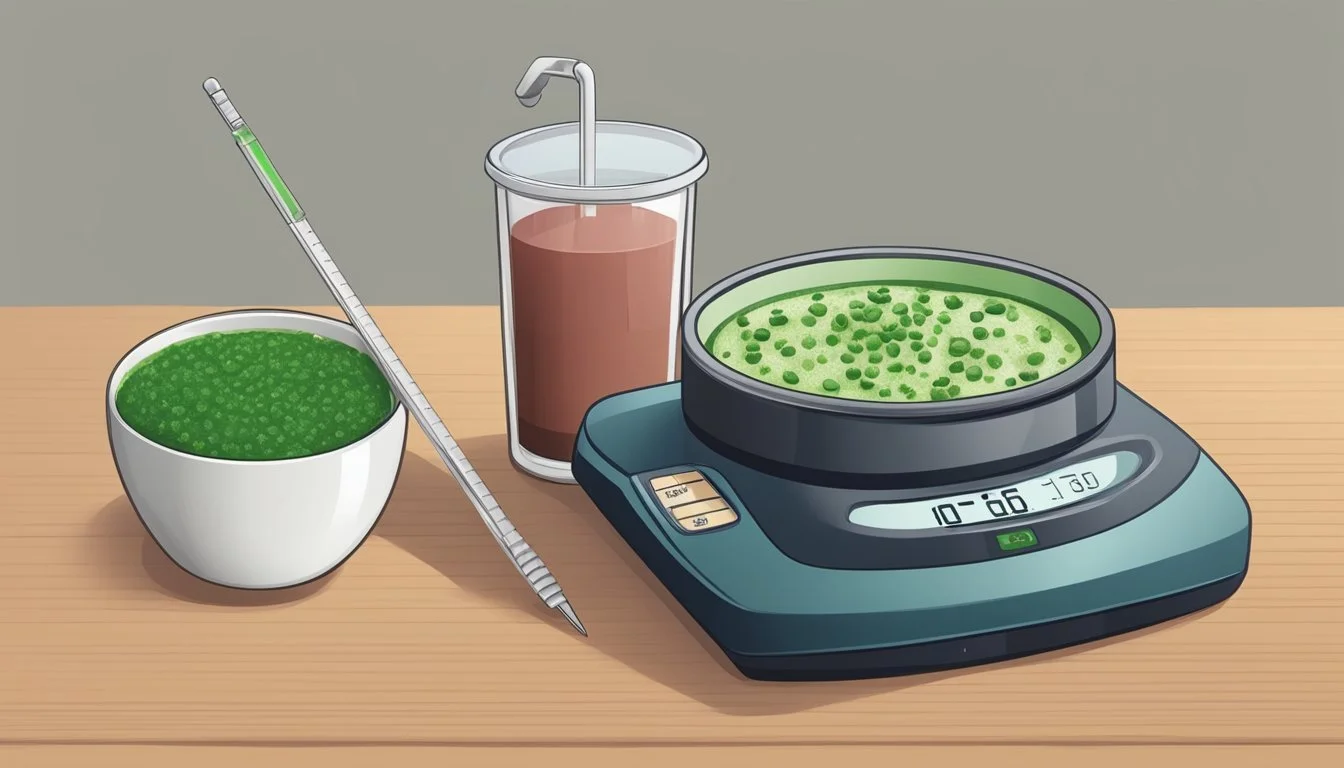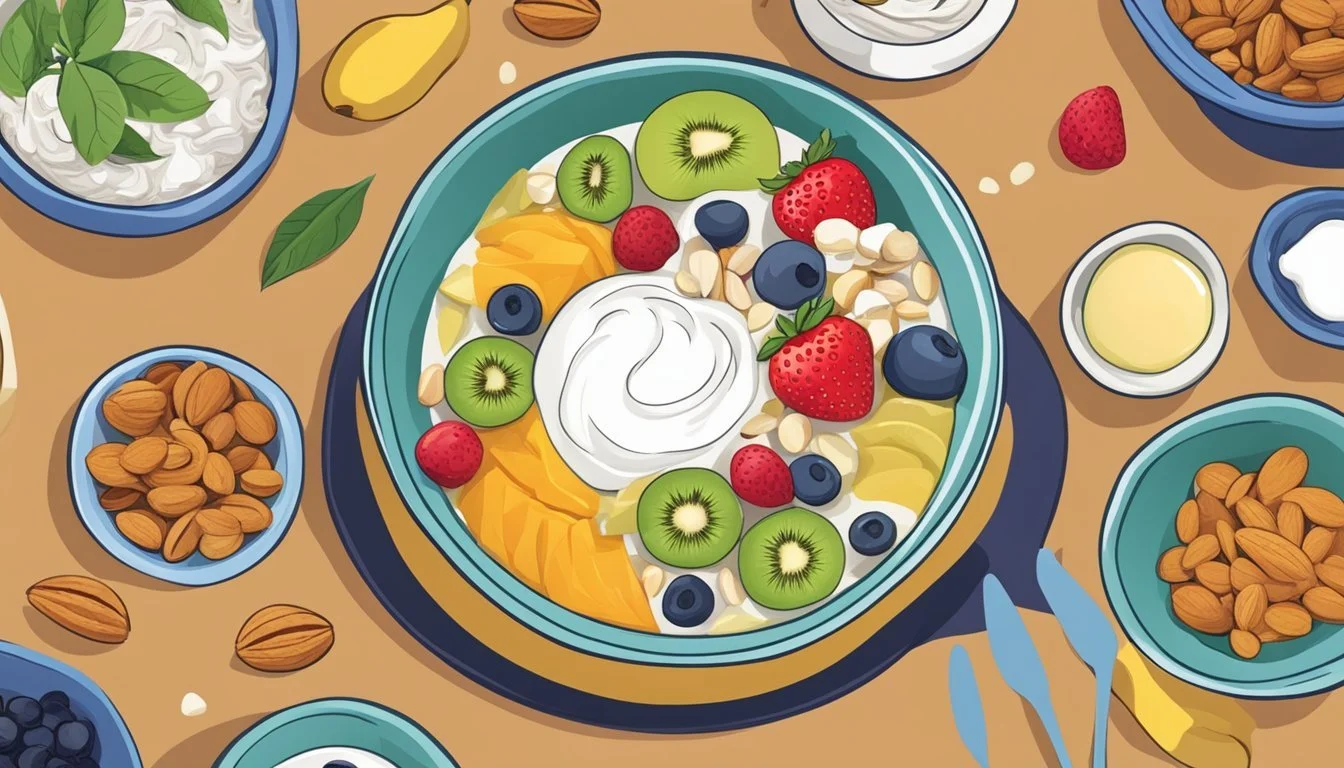Can Diabetics Eat Cendol?
Understanding Health Implications
Diabetics often have to scrutinize their dietary choices to manage blood sugar levels effectively. One intriguing question many ask is whether they can enjoy Cendol, a popular Southeast Asian dessert made from coconut milk, green rice flour jelly, and palm sugar syrup. Diabetics can eat Cendol, but portion control and careful ingredient selection are crucial.
Cendol's ingredients are rich in carbohydrates, which can spike blood sugar levels. To make it more suitable, consider reducing the amount of palm sugar or using a sugar substitute. Consulting a dietitian can also offer personalized advice. The American Diabetes Association emphasizes the importance of monitoring carbohydrate intake and choosing foods that have a lower glycemic index.
Incorporating non-starchy vegetables or fibers alongside can moderate blood sugar levels. Those with Type 2 Diabetes or insulin resistance need to be especially vigilant, as their bodies have a harder time managing glucose. By tweaking the traditional recipe and practicing portion control, diabetics can occasionally delight in this refreshing dessert without jeopardizing their health.
Understanding Cendol
Cendol is a traditional Southeast Asian dessert enjoyed across countries such as Malaysia, Indonesia, and Thailand. It is known for its vibrant green rice flour jelly, which is often soaked in a delightful blend of palm sugar syrup and coconut milk.
This sweet treat is typically served with shaved ice, making it a popular choice for hot weather. The main ingredients are shaved ice, palm sugar syrup, and coconut milk.
A serving of cendol can be high in calories and carbohydrates. The palm sugar syrup contributes substantial amounts of sugar, which can affect blood sugar levels.
Ingredient Contribution Shaved Ice Hydration Palm Sugar Syrup Sugar Coconut Milk Fat, Calories Green Rice Flour Jelly Carbohydrates
Despite its delicious taste, the sugar content and carbohydrates found in cendol mean that it should be consumed in moderation, especially for individuals managing their blood sugar levels.
Understanding the nutritional aspects of cendol is essential for those with dietary restrictions or diabetes.
By focusing on ingredient choices, individuals can make more informed decisions regarding their consumption of this beloved dessert.
Nutritional Profile of Cendol
Cendol offers a mix of nutrients, but it is essential to understand its calorie content, sugar and carbohydrate levels, fat and protein composition, as well as any vitamins and minerals present.
Calorie Content
Cendol is relatively high in calories. A typical portion of around 368 grams contains approximately 386 calories. This makes it a calorically dense dessert, mainly due to its ingredients like coconut milk and palm sugar syrup. Consumers should keep in mind that these calories can quickly add up, particularly if Cendol is consumed frequently or in large quantities.
Sugar and Carbs
Cendol is rich in sugars and carbohydrates. The pandan-flavored jelly and the palm sugar syrup contribute significantly to its 59 grams of carbohydrates per serving. Among these, a substantial portion comes from added sugars, which can be a concern for diabetics. This high carbohydrate and sugar content can lead to rapid spikes in blood glucose levels, posing challenges for blood sugar management.
Fat and Protein
The fat content in Cendol is also noteworthy. With 15 grams of fat per serving, primarily from coconut milk, it includes saturated fats that should be consumed in moderation. Protein content, on the other hand, is modest at 6 grams per serving. While this provides some protein, it is relatively low compared to the fat content, making it less ideal as a protein source.
Vitamins and Minerals
Cendol does contain some vitamins and minerals, although they are not the primary nutritional focus. The coconut milk provides small amounts of vitamins such as Vitamin C and minerals like potassium and magnesium, which contribute to its nutritional value. However, these nutrients are present in modest amounts and are overshadowed by the high caloric and sugar content of the dessert.
Impact of Cendol on Blood Sugar
Cendol, a popular Southeast Asian dessert, can have a significant impact on blood sugar levels. Understanding its effects involves looking at blood sugar spikes and the glycemic index of its ingredients.
Blood Sugar Spikes
Cendol contains ingredients such as palm sugar syrup and rice flour jelly, which can elevate glucose levels. When consumed, the sugars in the syrup are rapidly absorbed into the bloodstream, leading to a quick rise in blood glucose levels.
Such spikes in blood sugar can be particularly concerning for individuals with diabetes. To manage insulin and glucose response, they might need to monitor their portions carefully and possibly adjust their insulin dosage. Consuming Cendol alongside foods high in fiber, protein, or fat can help slow the absorption of sugar.
Glycemic Index
The glycemic index (GI) measures how quickly carbohydrates in food raise blood glucose levels. The key ingredients in Cendol, such as palm sugar and rice flour, have a high GI, meaning they are rapidly digested and lead to quick rises in blood sugar.
For diabetics, choosing foods with a low to medium GI is preferable. Palm sugar, used in Cendol, has a GI score that contributes to its rapid impact on glucose levels. Substituting some high GI ingredients with lower GI alternatives, like using sweeteners rather than sugar syrup, might help mitigate these effects.
Moderation is key when enjoying traditional delights like Cendol, allowing individuals to enjoy their favorite treats without drastic impacts on their blood sugar management.
Dietary Considerations for Diabetics
To manage diabetes effectively, careful attention to dietary choices focusing on carbohydrate management, portion control, and the use of sugar substitutes is essential. Understanding these elements can help maintain blood sugar levels and overall health.
Carb Counting
Carbohydrates significantly impact blood sugar levels. Diabetics should monitor their intake closely.
Non-starchy vegetables, whole grains, beans, and legumes are preferred sources of carbs due to their high fiber content. A low-carb meal pattern typically involves keeping carbs to 26-45% of total calories. This can help in managing blood glucose levels and maintaining overall health.
Portion Size
Controlling portion size is crucial in diabetes management. Measuring food portions helps avoid overeating and ensures balanced nutrient intake.
Using smaller plates can help visually regulate portion sizes. Another useful method is the Plate Method, where half the plate is filled with non-starchy vegetables, a quarter with lean protein, and the remaining quarter with whole grains or starchy vegetables.
Sugar Substitutes
Sugar substitutes can play a role in diabetes management by reducing total carbohydrate intake.
Options like stevia, aspartame, and sucralose provide sweetness without the carbs found in sugar. These substitutes can help diabetics enjoy sweet-tasting foods and beverages without spiking blood sugar levels. However, it's important to use them in moderation and choose products that are also low in other carbohydrates.
Healthier Alternatives to Cendol
There are various healthy substitutes for traditional desserts that can maintain blood sugar levels while satisfying sweet cravings. The focus is on low-carb and sugar-free options that offer nutritional benefits without compromising taste.
Sweet Treats and Diabetes
Choosing desserts wisely is essential for managing diabetes. Sugar-Free Candy or sweets made with artificial sweeteners like stevia or sucralose are great options. These sweeteners do not cause blood sugar spikes and are lower in calories compared to regular sugar.
Incorporating nuts, seeds, and fruits into desserts can provide both sweetness and nutrition. For instance, a fruit and nut salad can deliver fiber, healthy fats, and vitamins. Fruits like berries are lower in natural sugars and are high in antioxidants, making them suitable for diabetics.
Sugar-Free and Low-Carb Options
Xylitol and monk fruit are excellent sugar substitutes for preparing low-carb desserts. These sweeteners can be used in baking or as toppings for various dishes. Vegetables such as zucchini can even be used in making zucchini bread, which is a lower-carb alternative.
Nutritious legumes like beans can be used to make bean brownies, offering protein and fiber that can help moderate blood sugar levels. Additionally, using Greek yogurt with a hint of vanilla extract and artificial sweeteners can create a delicious, low-carb parfait. This can be topped with nuts and a small number of fruits for added texture and flavor.
Lifestyle and Diabetes Management
Effective diabetes management relies on careful weight management, regular physical activity, and strict medical oversight, which collectively help stabilize blood sugar levels and improve overall health.
Weight Management
Achieving and maintaining a healthy weight is crucial for diabetics. Excess weight, especially around the abdomen, can increase insulin resistance, making it harder to control blood sugar levels.
A balanced diet that includes non-starchy vegetables, lean proteins, and healthy fats should be prioritized. Reducing calorie intake and avoiding processed foods can aid in weight loss.
Weight management directly impacts blood pressure and heart health, reducing the risk of cardiovascular disease. Consistent progress should be monitored by a healthcare provider to ensure effective results.
Physical Activity
Regular physical activity is vital for diabetes management. Exercise helps the body use insulin more efficiently, which can lower blood sugar levels.
Activities like walking, cycling, and swimming are beneficial. Aim for at least 150 minutes of moderate-intensity exercise per week. Incorporating strength training exercises twice a week can further enhance insulin sensitivity and support muscle maintenance.
Physical activity also assists in weight management and improves heart health by lowering the risks of heart disease and hypertension.
Medical Management
Medical oversight is essential for diabetes management. Regular visits to the doctor allow for critical monitoring of blood sugar levels and adjustments in treatment plans.
Doctors may prescribe medications or insulin therapy as needed. Routine check-ups help in early detection of complications such as cardiovascular disease and kidney issues.
Medical nutrition therapy (MNT) is also important. Collaborating with a healthcare provider to create a personalized nutrition plan ensures dietary choices support optimal diabetes control, reducing risk factors for other health issues.
Consulting Healthcare Professionals
Diabetics should consult with healthcare professionals before adding cendol to their diet. A registered dietitian (RD) plays a crucial role in helping to manage diabetes through personalized dietary plans.
They can assess the nutritional content of cendol and how it fits within an individual's carbohydrate limits.
Doctors, particularly endocrinologists, can provide additional medical advice. They might assess how consuming cendol could affect blood glucose levels and recommend appropriate portions or alternatives.
The American Diabetes Association (ADA) offers guidelines and educational resources. These can assist both diabetics and healthcare providers in making informed decisions.
Referrals to comprehensive diabetes self-management education programs can provide ongoing support and updated dietary recommendations.
Consulting a dietitian or physician ensures that dietary choices like cendol fit into a balanced, diabetes-friendly eating plan. They can also help monitor any impacts on health and adjust other aspects of the diet as needed.








